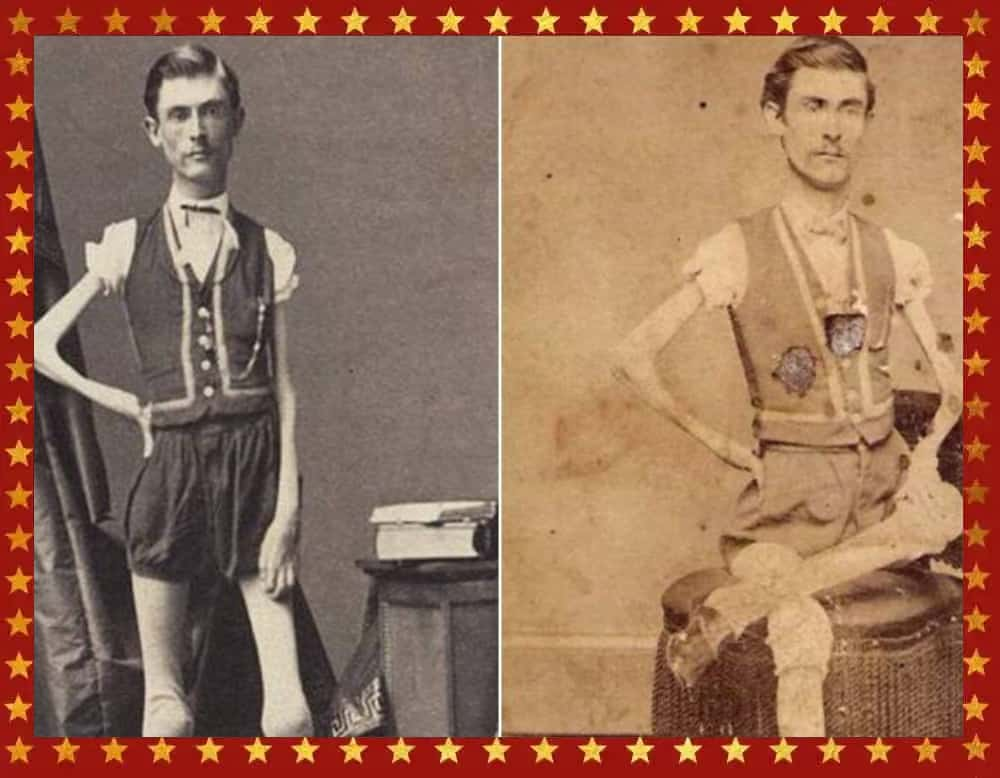
Living Skeleton

Content Warning: The circus side show industry predominantly employed individuals with disabilities who faced challenges in securing alternative employment opportunities. Despite these obstacles, many of them enjoyed substantial financial compensation and lived fulfilling lives. The primary objective of this article is to provide knowledge and commemorate the lives of these individuals. It should be emphasized that the intention is not to diminish their worth or dignity based on their disabilities.
The following content contains sensitive material that may be distressing or triggering for some individuals. Reader discretion is advised.
Isaac W. Sprague, born on May 21, 1841, in East Bridgewater, Massachusetts, made a name for himself as an entertainer and sideshow performer, famously known as the living human skeleton. His life took a turn when, at the age of 12, he began experiencing weight loss after falling ill following a swim. Despite maintaining a healthy appetite, his weight continued to decline progressively, a condition identified as extreme progressive muscular atrophy, which ultimately led to his demise.
During his early adulthood, Sprague tried various occupations such as working as a cobbler and a grocer, but his ailment prevented him from pursuing a stable career. Tragedy struck when his parents passed away, leaving him unemployed and struggling to support himself. In 1865, he found an opportunity in the circus sideshow, where he gained recognition as “the Living Skeleton” or “the Original Thin Man.” The renowned showman P. T. Barnum himself hired Sprague the following year, offering him a salary of $80 per week to work at his successful American Museum Freak show. Sprague fondly recalled the moment when Barnum commented on his appearance, asking his agent, “Pretty lean man, where did you scare him up?
In 1868, a fire ravaged Barnum’s Museum, but Sprague managed to escape with his life. Taking a break from the sideshow, he entered into marriage with Tamar Moore. The couple had three sons who enjoyed normal and healthy lives. Despite attempts to distance himself from the sideshow world, Sprague faced financial difficulties and rumors circulated about his gambling habits. Due to his condition, finding employment outside of Barnum’s establishment proved challenging, leading him to intermittently tour across the country and even overseas.
At the age of 44, Sprague stood at a height of 5 feet 6 inches (168 cm) and weighed a mere 43 pounds (19.5 kg). His fragile state demanded a constant intake of nutrients, often carrying milk in a flask around his neck to sustain himself and remain conscious. Sadly, he passed away in poverty on January 5, 1887, due to asphyxia in Chicago, Illinois.
Sprague’s legacy as the living human skeleton paved the way for many similar acts to follow. It became customary for the Living Skeleton act to join forces with the Fat Lady act as a result of promotion and work demands. However, despite his struggles, Sprague discovered happiness in his family. Describing his newfound joy, he expressed that life, which had seemed insignificant at times, now held greater value.

Join Us
Subscribe to Twisted Carnival’s newsletter for an exhilarating journey into the realm of dark wonders, with captivating secrets, announcements, and exclusive offers, keeping you one step ahead and immersed in thrilling tales as part of their mesmerizing subscriber community.
Get a front-row seat to Twisted Carnival’s macabre spectacle on social media, with twisted artistry, mesmerizing performances, behind-the-scenes glimpses, and exclusive event updates, connecting you to a community of thrill-seekers and captivating tales.


